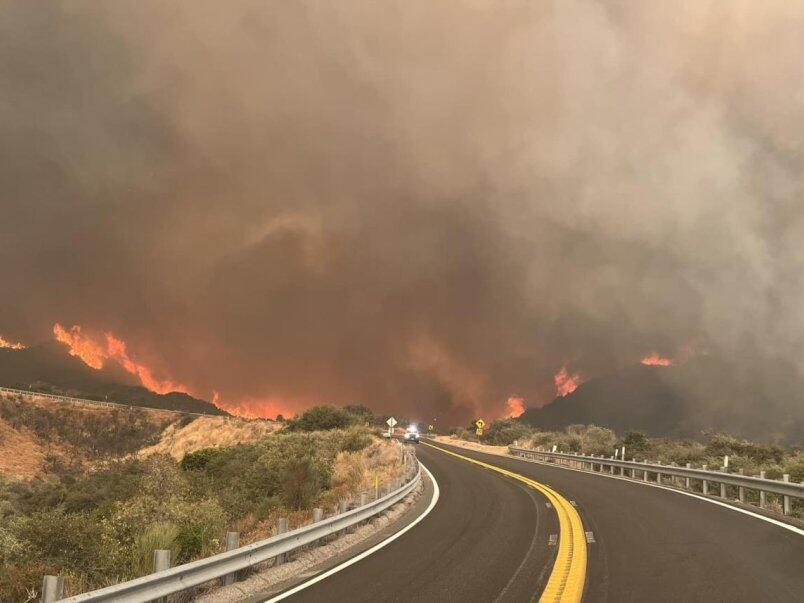Physical Address
304 North Cardinal St.
Dorchester Center, MA 02124
Physical Address
304 North Cardinal St.
Dorchester Center, MA 02124

On September 7, the Line Fire near the San Bernardino National Forest in Southern California prompted mandatory evacuations for residents in hundreds of homes. The rapidly spreading fire forced law enforcement to react to “an immediate threat to life,” leading to the evacuation orders for the communities of Running Springs and Arrow Bear Lake. This announcement came just one day after parts of Highland, California, were also placed under evacuation as the wildfire approached closer to the city of San Bernardino.
The wildfire ignited on Thursday night and has since ballooned to over 17,459 acres with no containment reported as of Saturday night. The intense fire activity necessitated the closure of Highways 330 and other roads in the area as officials struggled to gain control over the flames.
CalFire, the California agency responsible for forestry and fire protection, announced that around 35,405 structures are currently at risk. This includes a variety of buildings, such as single-family homes, multi-family residences, commercial properties, and other minor structures. Fortunately, no damage has been reported thus far.
As of the recent updates, three injuries have been reported among both fire personnel and civilians involved in the firefighting efforts. Currently, 628 personnel, 65 engines, two helicopters, three bulldozers, and one water tender are dedicated to battling the blaze. However, smoke has become a significant barrier for aerial support, limiting access to certain areas of the fire which complicates containment efforts.
CalFire indicated that upcoming hot and dry weather conditions, combined with thunderstorms, are expected to further challenge firefighters in their efforts over the following days. Southern California is currently under an excessive heat warning, with record-breaking temperatures for September 7 recorded across the region. In areas such as San Bernardino and Riverside counties, temperatures reached dangerously high levels between 102 and 110 degrees Fahrenheit.
As the fire spreads, its movement is being tracked towards the north-northeast. The primary area of concern lies within the eastern flank of the fire, identified as the most threatened point for containment. Meanwhile, the leading western edge of the fire remains about 12 miles east of the San Bernardino International Airport.
Firefighters are receiving resources from various parts of the state to bolster their efforts. The California Department of Forestry and Fire Protection reported that fire crews have started to make progress during the cooler nighttime hours, benefiting from increased humidity and aerial support from helicopters that drop water on the flames.
However, challenges remain due to the steep terrain and limited access to certain sections of the fire. Firefighting efforts are being aided by both fixed-wing aircraft and rotary helicopters, which are a vital part of the ongoing operation in this difficult situation.
Source: UPI



